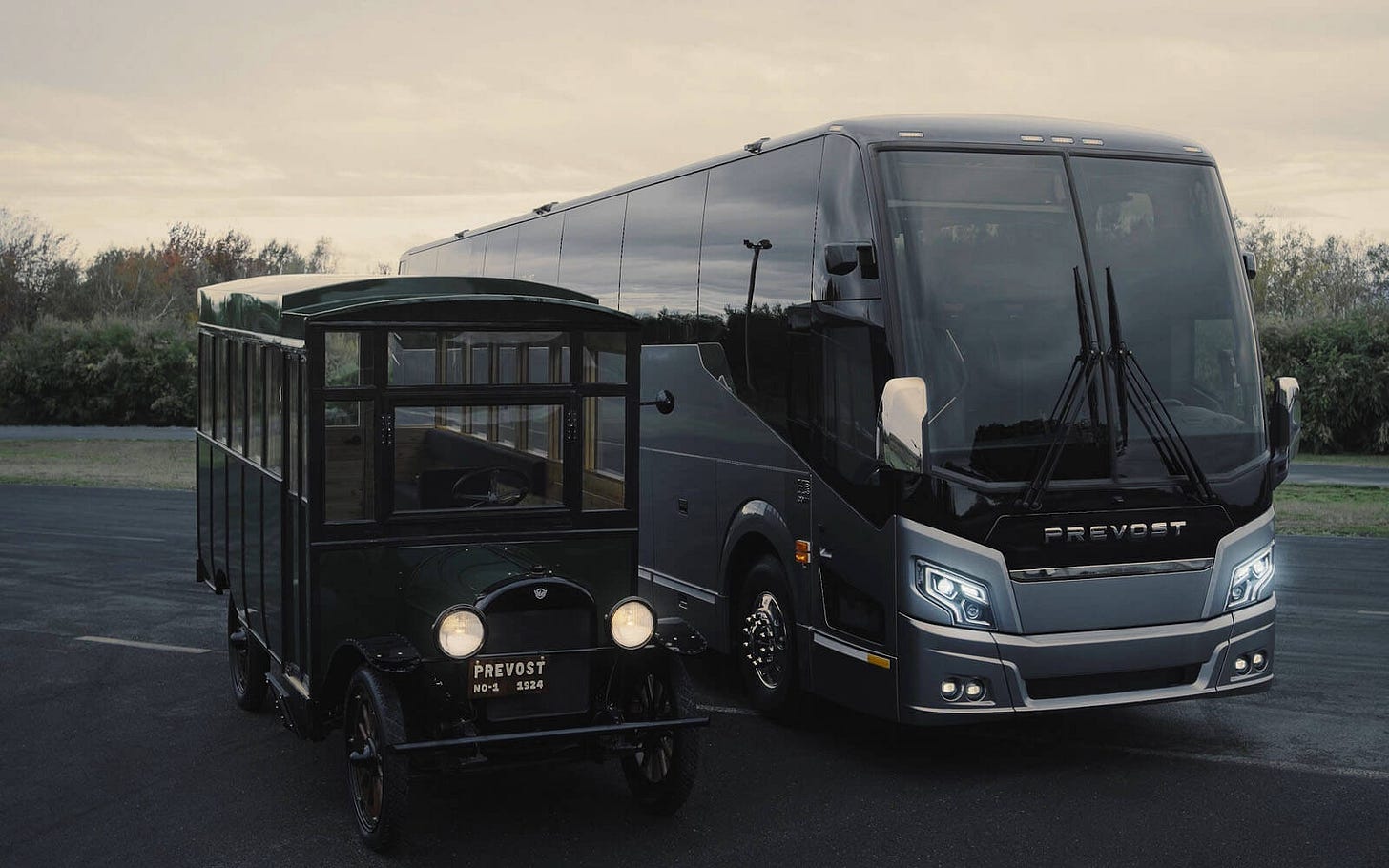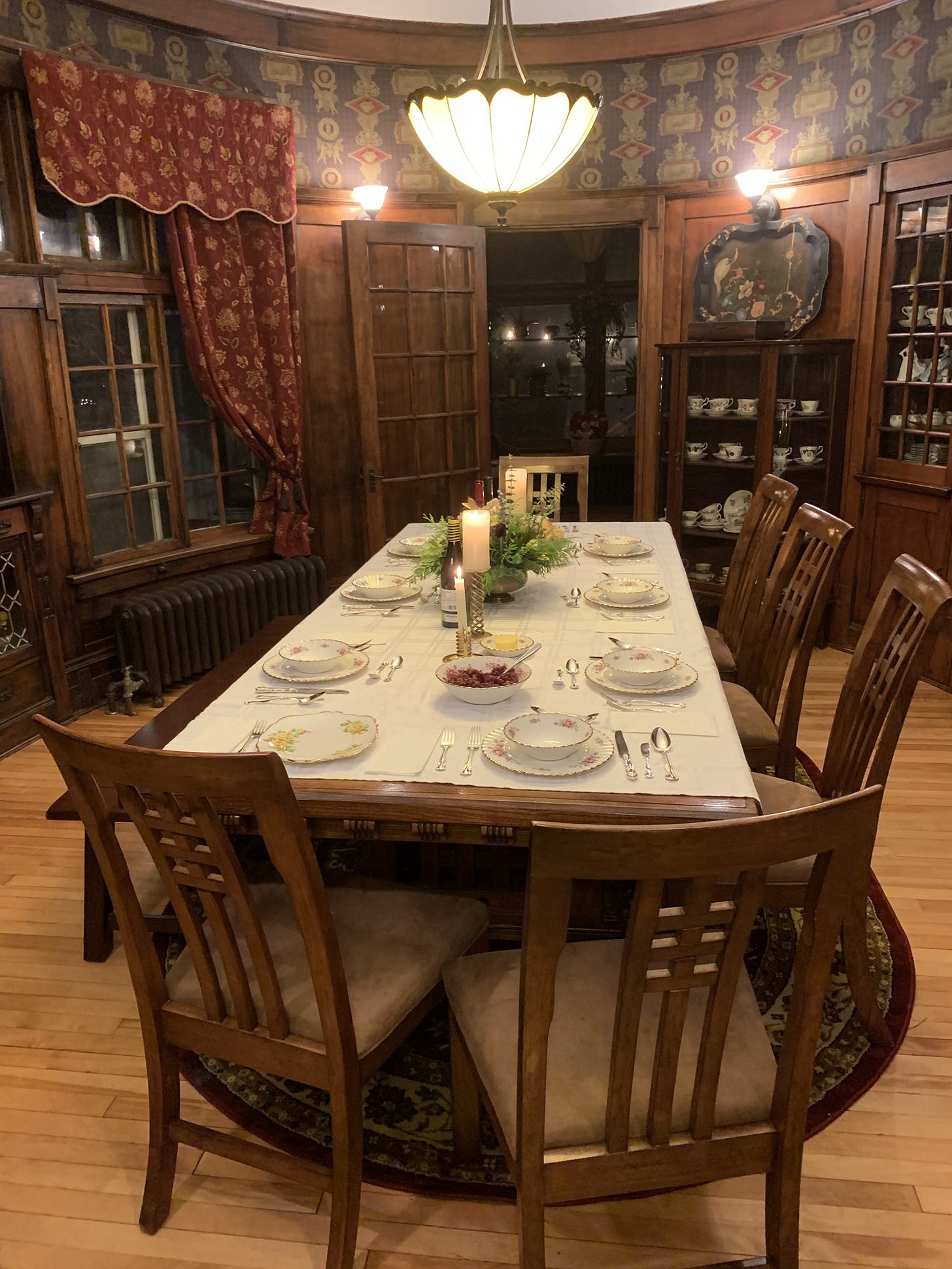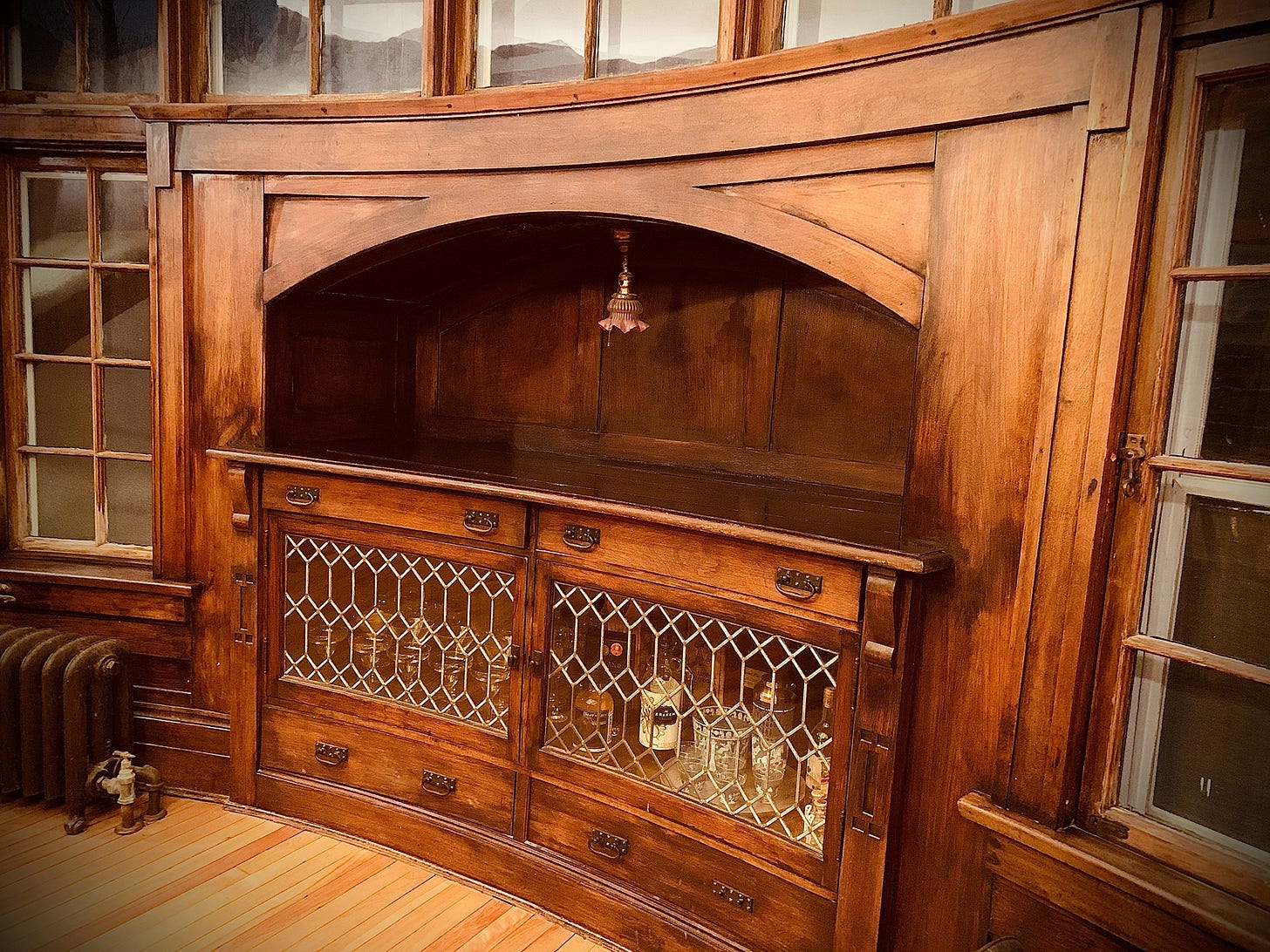GET ON THE BUS
We didn’t just outsource the factory—we outsourced the pride that came with knowing how to build.
I spent some time recently looking for stories of work in Canada. It was fascinating. There is definitely a new interest in bringing work back to Canada in both the physical and spiritual sense. So it’s a good time to celebrate some examples that might light the way forward. Here’s a story about a bus builder that’s running right on time.
If you’ve ever seen a big touring bus, it’s probably a Prevost Bus. Watch out for the distinctive family name on the front next time you see one.
A Journeyman’s Journey
In the heart of Quebec's Bellechasse region, the story of Eugène Prévost stands as a testament to the transformative power of dedication and craftsmanship. Born on November 12, 1898, in Sainte-Claire, Quebec, Prévost began his journey as a humble carpenter, specializing in crafting church pews and school furniture. His meticulous attention to detail and commitment to quality quickly earned him a reputation for excellence.
In 1924, Prévost's skills were called upon for a unique project: constructing a wooden bus body to be mounted on a REO truck chassis. This endeavor marked the inception of a new direction for Prévost, blending his woodworking expertise with innovative design. Recognizing the potential in this niche, he gradually transitioned from furniture-making to focus on manufacturing coach buses and motor homes. By 1937, he had established a dedicated manufacturing facility in Sainte-Claire, laying the foundation for what would become a legacy in the transportation industry.
Prévost's unwavering dedication to his craft and his community did not go unnoticed. In 1947, he was elected mayor of Sainte-Claire, a role in which he served for five years. During his tenure, he spearheaded initiatives that modernized the village, including the acquisition of its first fire engines and the development of new streets. His leadership extended to the local church, where he oversaw significant renovations and enhancements.
Today, the company he founded, Prévost Car, stands as a leader in the industry, producing luxury coaches and motor homes that traverse not only the roads of Canada but also those of the United States and beyond. The headquarters remain in Sainte-Claire, a lasting tribute to Prévost's vision and perseverance.
Eugène Prévost's life exemplifies the ethos of the Canadians we must become again: embracing hard work, innovation, and community service. His journey from a local carpenter to the founder of an internationally recognized company underscores the profound impact that dedication and craftsmanship can have on both a community and an industry.

I feel a special connection to carpenters — an appreciation of workers in wood.
I wrote a couple week sago about my brother and other carpenters:
Carpentry is unique among the trades in that it often demands on-the-spot improvisation in a way that plumbing, electrical, or roofing rarely do. Those trades operate within strict codes and standardized methods—pipes must connect, circuits must flow, roofs must seal—with little room for deviation. But carpentry? Carpentry is a conversation with chaos. Wood swells, walls lean, angles deceive, and measurements—no matter how precise—sometimes just don’t work in the real world the way they did on the blueprint. A carpenter, often the lowest-paid trade on the site, is part builder, part problem-solver, part artist. While an electrician is testing a circuit, a carpenter is staring at a stubborn joint, head tilted, measuring tape out, muttering curses at gravity itself. It’s a trade that rewards adaptability because no two projects are ever exactly the same. The best carpenters aren’t just skilled—they’re thinkers, fixers of the unexpected, masters of making things work when they really, really don’t want to.
A Jubilee House
The dining room at The Jubilee House was made by ship's carpenters. The Mather's family, who originally commissioned the home was (and still is) a prominent Halifax shipping family. They brought a shipload of the finest South American hardwoods here to Halifax and enlisted their best ship's carpenters to build this dining room. The carpenters were clearly showing off.
As the ships once built in Nova Scotia are now gone, this room might be the best example of 19th century Nova Scotia ship carpentry still in existence today. It's a marvel of curves and shapes... not a straight line to be found.
Some of the oldest things we still have—things built by human hands, not machines—were made by carpenters. Altars. Chests. Pews. Ships. Homes. Stories carved in wood and passed across generations. Before the plough, before the pen, before the printing press—there was the carpenter. The one who took what the forest gave and coaxed it into shelter, into furniture, into form. The one who squared the first corners of civilization. You can’t build a temple or a town without someone who knows how to join two boards so they stay joined.
All The President’s Buses
The company Prevost founded, Prévost Car, remains headquartered in Sainte-Claire to this day. It builds luxury coaches and high-end motorhomes.
But it also built this bus.
Ground Force One is the unofficial code-name for the black armored buses used to transport the president of the United States and other dignitaries. When the president is onboard, it’s given a code name like “Stagecoach”.
History
The United States Secret Service used to rent buses as part of the presidential motorcade, retrofitted for secure communications where necessary. In August 2011, the Secret Service introduced the buses as new permanent additions to the federal government's fleet, initially used by Barack Obama in the campaign leading up to the 2012 presidential election.
The bus was nicknamed "Ground Force One" following an unofficial solicitation for names held by Mike Allen, who announced the results on the Politico Playbook blog.
The model X3-45 VIP was designed and built as a conversion shell on a three-axle bus chassis by Quebec, Canada-based specialist firm Prevost Car to provide 505 square feet (46.9 m2) of interior space, including flashing police-style red and blue lights on the front and the back. It was then further outfitted by the Secret Service with secure communications and other specialized equipment. The two buses cost $1.1 million each.
According to the Secret Service, Prevost was the only manufacturer that had a vehicle which could support the weight of the required security and communication equipment. Senator John McCain criticized Obama for using a Canadian-sourced bus, but the tour bus used by McCain during his 2008 "Straight Talk" tour was also built by Prevost.
Yes, in an era of trade squabbles, nationalist slogans, and made-in-America mandates, the most powerful people in the free world tour the country in custom-built Canadian coaches, made in Quebec by the descendants of a church-pew carpenter.
There’s a kind of sweet irony here. While politicians bicker over tariffs and re-shoring, the legacy of a quiet craftsman continues to do what it always has: move people forward.
Eugène Prévost’s story is more than a curiosity—it’s a parable. It reminds us that good work, done well, outlasts politics. It proves that patriotism doesn’t always roar; sometimes it hums softly beneath the engine of a well-built bus.
In a time when we’re all trying to figure out what work means again—what’s worth making, what’s worth saving—his life offers a kind of answer. You don’t have to chase headlines to shape history. Sometimes, all it takes is building the thing no one else can, right where you are.
The Dignity of Making Things
We’ve reached a strange point in the life of our country where “working with your hands” is often treated as a fallback plan. As though a trade is something you settle for. As though the mind and the body must operate on different tracks—one destined for conference rooms, the other for machine rooms.
Let’s reject that division entirely.
Adm. Rickover, writing on education, observed, work is, in a profound way, held in contempt by our educational system. Students believed to be low in academic talent are steered into vocational programs, while academically more gifted students are steered way from them, as if they were too good to be made to work. Such a distinction is arbitrary and invidious and just as rain falls equally on the just and unjust, it inflicts an injustice both on the academically slow and on the advanced.
We should explicitly reject the modern academic disdain for vocational work, arguing that classrooms have mistakenly elevated abstract intelligence above practical competence—when in truth, the strongest citizens practice both. The welder who reads philosophy. The carpenter who votes with care. The electrician who teaches his daughter the names of stars.
That’s not a contradiction. That’s the model.
Somewhere along the line, we let ourselves believe that “real” intelligence wears a blazer and carries a laptop. That if you’re good at math, you should be an engineer, not a machinist. That if you can speak well, you should go into politics, not plumbing. And what a loss that’s been—for culture, for community, for the economy, and for the soul.
The Decline of Work
This decline in the productivity of building work is not unique to the USA.
This error in thinking that has permitted our educational system to devalue vocation is, as Rickover said, a rain that fall equally on us all. Over the past few decades, the Canadian construction sector's productivity performance has been lackluster. A study by the Centre for the Study of Living Standards highlighted that from 1961 to 2000, the construction sector experienced an average annual productivity growth of only 0.8%, significantly trailing the business sector's 2.0% growth rate . Notably, from 1983 onwards, construction productivity declined by 1.1% per year, despite increases in capital intensity and workforce education levels.
The construction sector's declining productivity has broader economic implications. As of 2023, construction accounted for 12.6% of all labour hours worked in Canada, up from 8% in 1997. This increase means that the sector's productivity challenges have a more pronounced effect on the national economy . Furthermore, the sector has been responsible for a significant portion of the decline in overall Canadian productivity relative to the pre-pandemic period.
We can return to offering vocational education. But until we also return to exulting the work of crafts people, coveting their creations, and bringing it back into our homes, lives, and public spaces our country will never be whole in the way we now wish.
Being Builders of a Nation
The great builders of Canada—Prévost among them—didn’t see a conflict between making and thinking. They understood that good work was good citizenship. That laying down a clean weld or carving a pew was its own kind of prayer. That work is not just a way to earn, but a way to be.
Work done well teaches patience, precision, humility, and pride. It builds people, not just things. It connects generations. It reminds us, in a world of digital ephemera, that something solid and heavy and real still matters.
And that’s the real scandal of our current moment—not that we stopped making things, but that we stopped appreciating and celebrating the people who do.












I lost that way of thinking when, at the age of 31, I became a carpenters helper in building my first home outside Bedford, Nova Scotia. My father-inlaw was the guide and expert through the whole experince from cutting the trees on the land down, to putting up the forms for the foundation, to
putting the last shingle on the roof we did the whole house by hand. It was the old way. We took Sundays off. Every Monday he would take our saws in to the shop to sharpen them.
It took us 10 months of 3-4 hours a night , full Saturdays to build the house. Of all I have done in my 78 years of life... the profession I worked at , the music awards from my time in the business, even the songs I have composed, this house is the project I am most proud of. I have never felt that staisfaction. (Well maybe the birth and life of my children but that's another story). Jim Henman
My Dad taught construction estimating at BCIT for awhile. I've always thought that what many contractors lack is not sense or ability, it's business acumen. If we want them to be more productive and efficient they should either be supported with bookkeepers, accountants and office management or taught those skills early and thoroughly. We concentrate on the physical aspect, as you say, but most of carpentry is basic math (angles, measurements, fractions, etc.) which is also useful for most kinds of bookkeeping tasks. Also, we need to make forms and regulations as streamlined as possible.